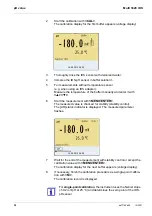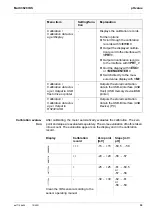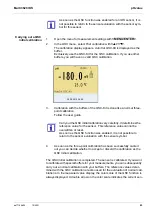
Multi 3620 IDS
pH value
ba77169d06
10/2021
31
5.2
pH calibration
5.2.1 Why calibrate?
During the operation of an pH sensor, the zero point (asymmetry) and slope of
the sensor change with time. As a result, an inexact measured value is
displayed. Calibration determines the current values of the zero point and slope
of the pH sensor and stores them in the measuring instrument.
Thus, you should calibrate at regular intervals.
5.2.2 When do you have to calibrate?
Routinely within the framework of the company quality assurance
When the calibration interval has expired
5.2.3 Automatic calibration (AutoCal)
Make sure that in the sensor menu,
Buffer
menu, the buffer set is correctly
selected (see section 11.1.1).
Use one to five buffer solutions of the selected buffer set in any order.
Below, calibration with Technical buffers (TEC) is described. When other buffer
sets are used, other nominal buffer values are displayed. Apart from that, the
procedure is identical.
Measurement of the temperature with the integrated temperature sensor
of an IDS sensor.
If the measured value is taken over from an IDS sensor, the status indi-
cator [TP
↑
] is displayed in the measurement window of the IDS-pH
adapter. The status indicator [TP
↓
] is displayed in the measurement win-
dow of the IDS-pH sensor providing the temperature value.
Manual determination and input of the temperature.
The settings for the temperature are selected in the menu for cali-
bration and measurement settings (see section 11.1.1).
If single-point calibration was set in the menu, the calibration proce-
dure is automatically finished with the measurement of buffer solu-
tion 1 and the calibration record is displayed.
1.
In the measured value display, select the measured parameter pH or
mV with
<M>
.
















































